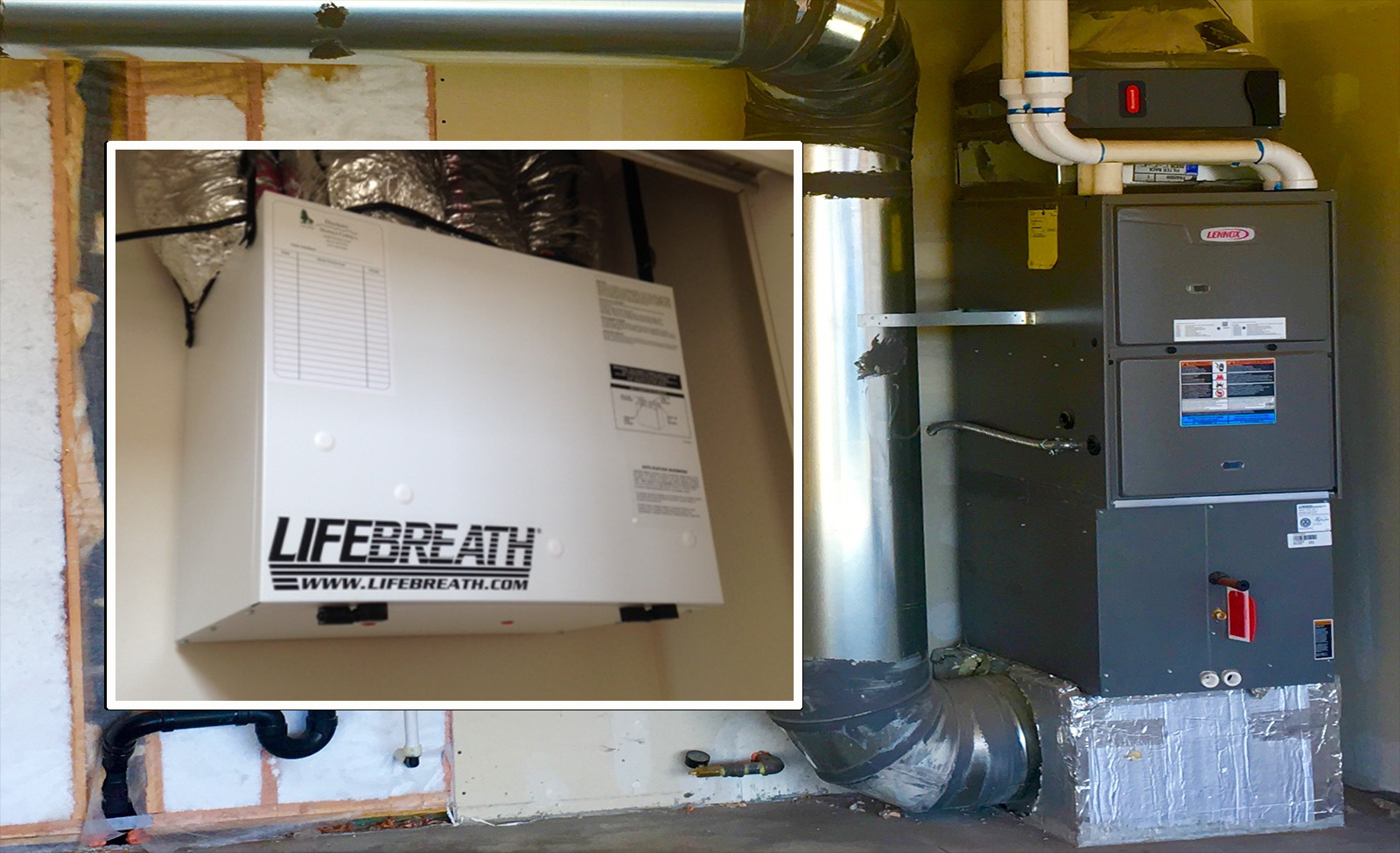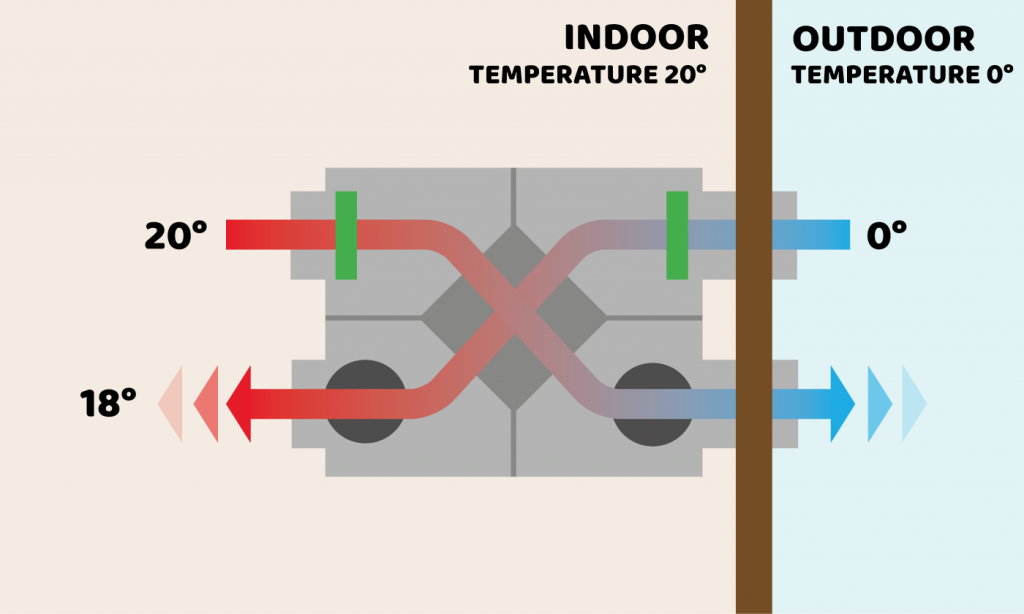The All-Inclusive Overview to the Uses of Heat Recovery Ventilation in Modern Buildings
Heat Recovery Ventilation (HRV) systems represent a considerable advancement in developing technology (HRV Heat Recovery Ventilation). They supply a method for exchanging stagnant interior air with fresh exterior air while decreasing energy loss. This approach not only enhances interior air top quality yet likewise adds to power effectiveness in both residential and business buildings. Comprehending the various applications and advantages of HRV can reveal its vital duty in modern layout and sustainability initiatives. The implications of this innovation are worth exploring additionally
Comprehending Heat Recovery Ventilation Equipments

Lots of contemporary buildings focus on energy performance, understanding heat healing air flow (HRV) systems is vital for maximizing indoor air quality and lowering power consumption. HRV systems work by moving warmth from stagnant indoor air to incoming fresh air, efficiently keeping comfortable interior temperatures while decreasing power loss. These systems contain a warm exchanger, fans, and ductwork that facilitate the circulation of air. During winter months, HRV devices record and reuse warmth from the outward bound air, while in summertime, they can aid cool down incoming air. By continually trading air, HRV systems additionally minimize moisture and the focus of indoor contaminants. Proper installment and upkeep of HRV systems are necessary for their efficiency and efficiency in improving general building performance and convenience.
Advantages of Heat Recovery Ventilation
Heat recovery ventilation systems supply many advantages that boost both energy performance and indoor air top quality in modern structures. By capturing and reusing power from exhaust air, these systems significantly decrease heating & cooling expenses, causing lower power consumption. Additionally, they keep a consistent flow of fresh outdoor air, decreasing the threat of indoor air pollutants and irritants. This continuous exchange assists regulate humidity levels, stopping mold and mildew growth and making certain a much healthier living setting. Furthermore, HRV systems add to sustainability goals by reducing overall carbon impacts. Their capability to enhance ventilation without compromising thermal convenience makes them a useful enhancement to modern building design, promoting both financial and environmental advantages.
Applications of HRV in Residential Buildings
As house owners progressively focus on power performance and indoor air high quality, the applications of heat recovery air flow (HRV) systems in property structures have actually become more prevalent. HRV systems are particularly useful in securely sealed homes, where maintaining fresh air circulation is important for protecting against moisture buildup and interior pollutants. They successfully transfer warmth from outbound stale air to inbound fresh air, minimizing power expenses related to cooling and heating. Furthermore, HRVs can enhance comfort levels by regulating humidity and temperature. They are also adaptable for various residential designs, including single-family homes and multi-unit structures. Generally, incorporating HRV systems supports lasting living techniques while making certain a much healthier interior environment for residents.
HRV in Business and Industrial Settings
In industrial and industrial settings, the application of warm healing air flow (HRV) systems has actually become increasingly critical for optimizing energy performance and keeping air quality. These systems properly transfer warmth from exhaust air to inbound fresh air, minimizing the need for extra home heating or cooling. This not only lowers power prices however additionally adds to sustainability campaigns. Industries such as manufacturing, warehousing, and office complex profit considerably from HRV systems, as they help manage temperature level and humidity degrees, making sure a comfortable and efficient environment. HRV systems help in eliminating contaminants and excess dampness, improving interior air high quality. As regulations around air high quality this post come to be stricter, the fostering of HRV innovation is most likely to grow, making it an essential element of modern industrial and commercial infrastructure.
Future Fads in Heat Recovery Ventilation Technology

Regularly Asked Inquiries
Just How Does Heat Recovery Ventilation Effect Indoor Air Top Quality?
Heat recovery ventilation substantially boosts interior air top quality by constantly exchanging stale interior air with fresh exterior air while recuperating energy. This process lowers pollutants, keeps suitable moisture levels, and assures a healthier atmosphere for occupants.
Can HRV Systems Be Mounted in Existing Structures?
HRV systems can indeed be set up in existing structures. Retrofitting may need alterations to ductwork and ventilation designs, yet it considerably enhances energy performance and indoor more helpful hints air high quality, making it a feasible option for older frameworks.
What Maintenance Is Needed for HRV Solutions?

Are There Details Climates Where HRV Is A Lot More Reliable?
Heat recovery ventilation systems are specifically reliable in environments with considerable temperature differences between periods. These Bonuses systems enhance energy effectiveness by recuperating heat from exhaust air, making them suitable for both chilly and reasonably warm settings.
Exactly How Do HRV Systems Affect Power Bills?
